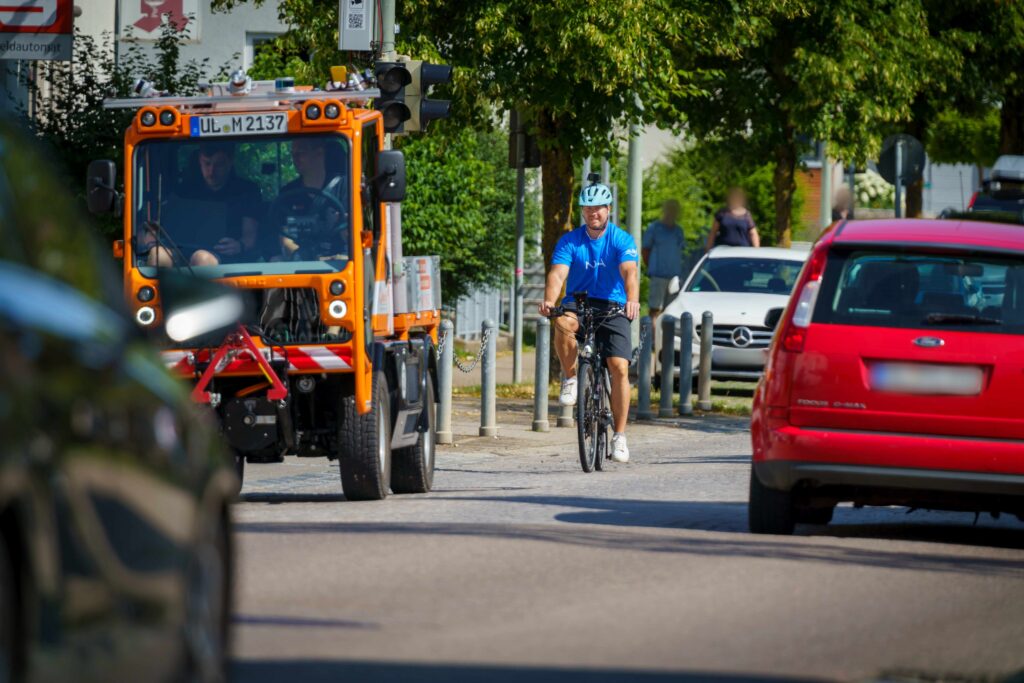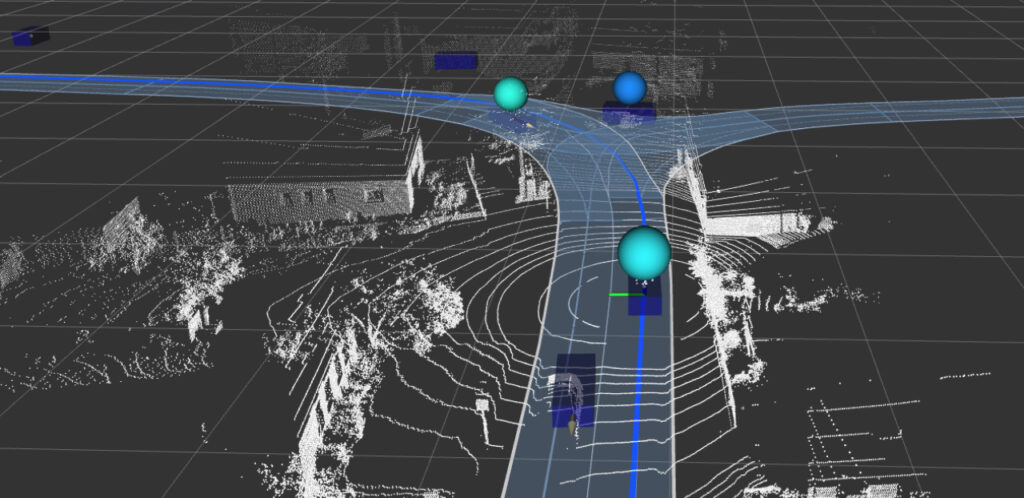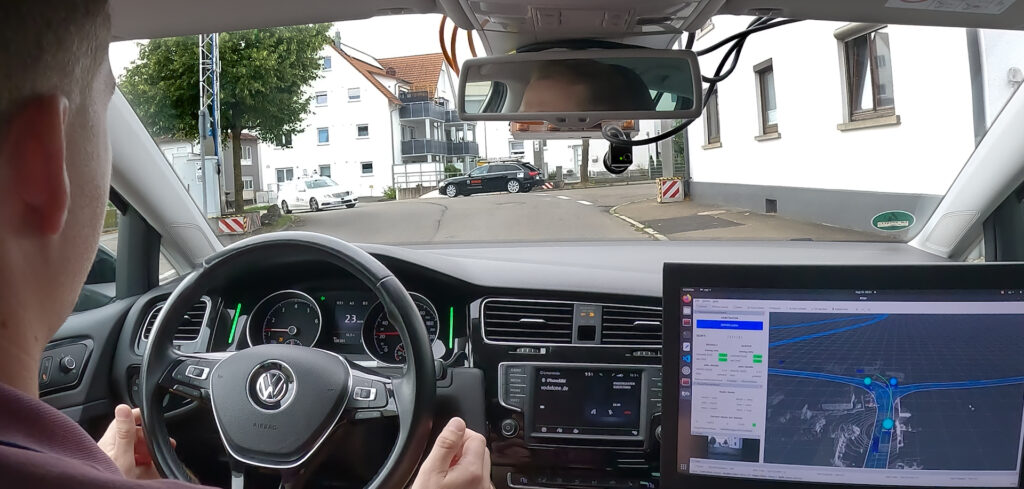The mobility sector is facing the challenges of digital transformation, increasing urbanization and automation, as well as the need for greater energy efficiency and climate action. The LUKAS research project – carried out by Bosch, InMach, IT-Designers, Mercedes-Benz, Nokia, Ulm University and the University of Duisburg-Essen – investigated how to improve traffic efficiency and safety in future mixed traffic scenarios in urban traffic environments, and the results of this three-year project have now been presented.
LUKAS is the abbreviation of the German name “Lokales Umfeldmodell für das kooperative, automatisierte Fahren in komplexen Verkehrssituationen” (local environment model for cooperative automated driving in complex traffic situations). Reliable communication between automated and non-automated traffic participants as well as within the infrastructure plays a key role here. The project was funded by the German Federal Ministry for Economic Affairs and Climate Action (BMWK) with €5.2m (US$5.5m) as part of its program for new vehicle and systems technology.
The LUKAS project uses all the information available within the local environment, including data from infrastructure sensors, connected cars and commercial vehicles and mobile devices such as smartphones used by pedestrians or cyclists. This concept provides anonymized data from traffic participants and stationary objects, including values such as position, extent and possibly the travel speed and direction of movement. The pre-processed sensor information is then relayed to an edge server, which is directly connected to the 5G network near the junction and provides data transmission with minimal delay times.
A fusion algorithm on the edge server is able to create a comprehensive model of the local surroundings and use this as the basis to plan maneuvers for connected traffic participants. Object information from the server’s environment model is then fed back to the road users. This expands their overview to include areas that they cannot detect themselves.
 “The edge server uses methods of artificial intelligence (AI), among others, to calculate an optimized, cooperative maneuver and then sends instructions to the connected participants,” said Rüdiger Walter Henn, head of the LUKAS project at Bosch. “This approach makes it possible to increase the overall energy efficiency of a traffic scenario and the safety of traffic participants, especially those who are vulnerable.”
“The edge server uses methods of artificial intelligence (AI), among others, to calculate an optimized, cooperative maneuver and then sends instructions to the connected participants,” said Rüdiger Walter Henn, head of the LUKAS project at Bosch. “This approach makes it possible to increase the overall energy efficiency of a traffic scenario and the safety of traffic participants, especially those who are vulnerable.”
To run the tests, which took place in a public area in the suburb of Ulm-Lehr in Germany, the consortium used a pilot installation supported by the city and operated by Ulm University. The selected area contains a junction with a right-of-way street turning off and a side street entering. The buildings there obscure the right-of-way, which makes this street situation particularly interesting for real traffic scenarios.
“This installation gives us excellent opportunities to use real traffic situations to test the approaches we have researched and developed, so we can very quickly draw conclusions about their suitability for practical use,” said Michael Buchholz, who heads the Electric Mobility and Connected Driving/Connected Infrastructure research groups at the Institute of Measurement, Control and Microtechnology at Ulm University.
The lampposts in the vicinity of the junction are equipped with video, lidar and radar sensors to detect and classify the flowing traffic. The object information is sent to the edge server via a 5G network from the partner Nokia. Due to data protection reasons, persons and vehicles are not able to be identified. The edge server hosts the global environment model, several evaluated variations of cooperative maneuver planning, and a warning module for pedestrians and cyclists.
To depict cooperative use cases in mixed traffic, Bosch, Mercedes-Benz and Ulm University bring in connected, partially automated passenger cars. InMach provides a connected prototype of a street sweeper. Special smartphone apps from IT-designers and Nokia make it possible to connect pedestrians and cyclists with the edge server while IT-designers collect data using a video drone to assist in the simulation of the traffic scenarios. The University of Duisburg-Essen then supports the project with traffic flow simulations.
All tested use cases verified the benefits of the LUKAS approach in terms of increasing traffic efficiency and safety. Simulation results from AI-based planning algorithms led researchers to expect a significant increase in the traffic flow. Studies by Mercedes-Benz showed a significant reduction in fuel consumption and a decrease in the time required to pass through the junction compared to conventional driving. By delaying oncoming traffic to allow for cooperative behavior, participants passing stationary vehicles and vulnerable traffic participants crossing the road are protected in obscured areas. Thanks to the new technology and cooperative scenario planning, traffic participants recognize early on which driving strategy will enable them to behave safely and efficiently.
Partners in the LUKAS project say the results have allowed them to gain informative experience about connected, cooperative driving and incorporate this into the development of new products. The aim is that the approach developed by LUKAS can help make automated driving in urban mixed traffic safer and more efficient for all traffic participants.



